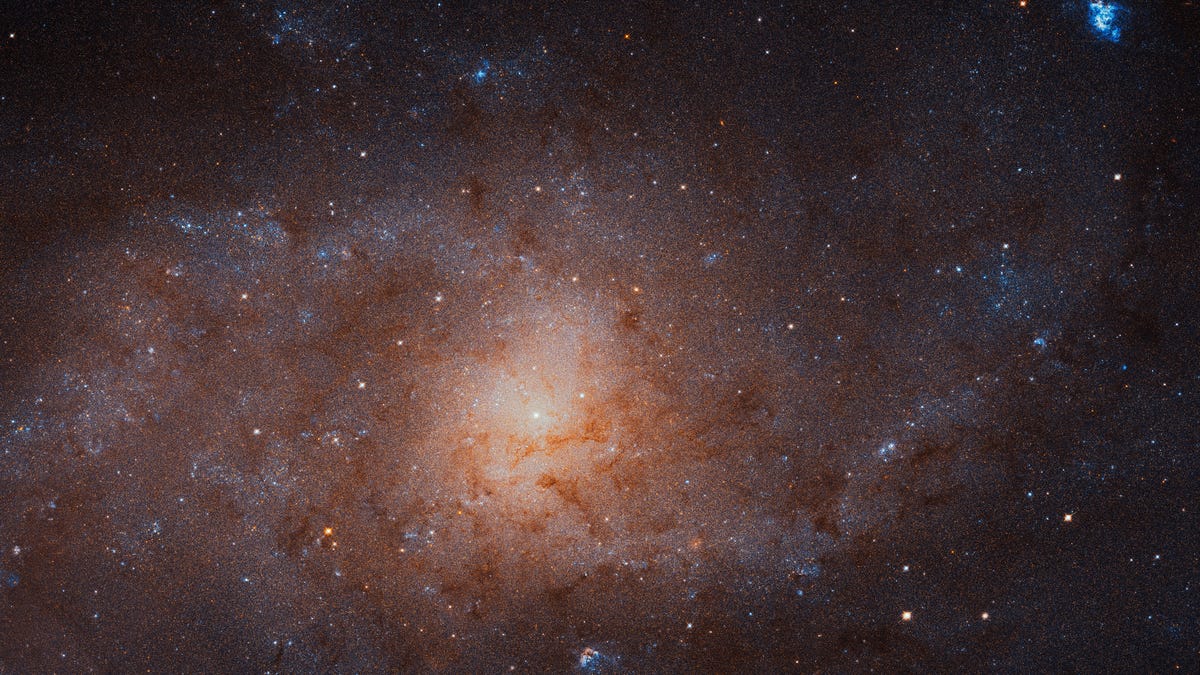Wild Hubble Triangulum Galaxy image is telescope's second largest ever
NASA's Hubble Space Telescope goes big for a star-studded view of a neighboring galaxy.

The mosaic of the Triangulum Galaxy showcases the central region of the galaxy and its inner spiral arms.
The Hubble Space Telescope's mind-blowing new image of the Triangulum Galaxy is almost as gigantic as the galaxy itself.
Triangulum, also called Messier 33, can be spotted by lucky skywatchers without an assist from a telescope, but it looks like a smudge. Hubble's vivid view, shared Monday, combines 54 images into one image showing the central part of the galaxy and some of its spiral arms.
You can check out the whole 1.6GB, full-sized image through the European Space Agency's Hubble site. Hubble is a joint project of NASA and ESA.
NASA says the image shows "a full spiral face aglow with the light of nearly 25 million individually resolved stars." We'll take the space agency's word for it. "My first impression on seeing the Hubble images was, wow, that really is a lot of star formation," said astronomer and project lead Julianne Dalcanton.
Triangulum is the third-largest galaxy in what's known as the Local Group of galaxies, which includes bigger neighbors Andromeda and our own Milky Way.
ESA says the Triangulum image is the second-largest ever released by Hubble and will help astronomers better understand how stars form and evolve.
If you want to see Hubble's largest-ever image, then check out the telescope's 2015 look at the Andromeda Galaxy.

